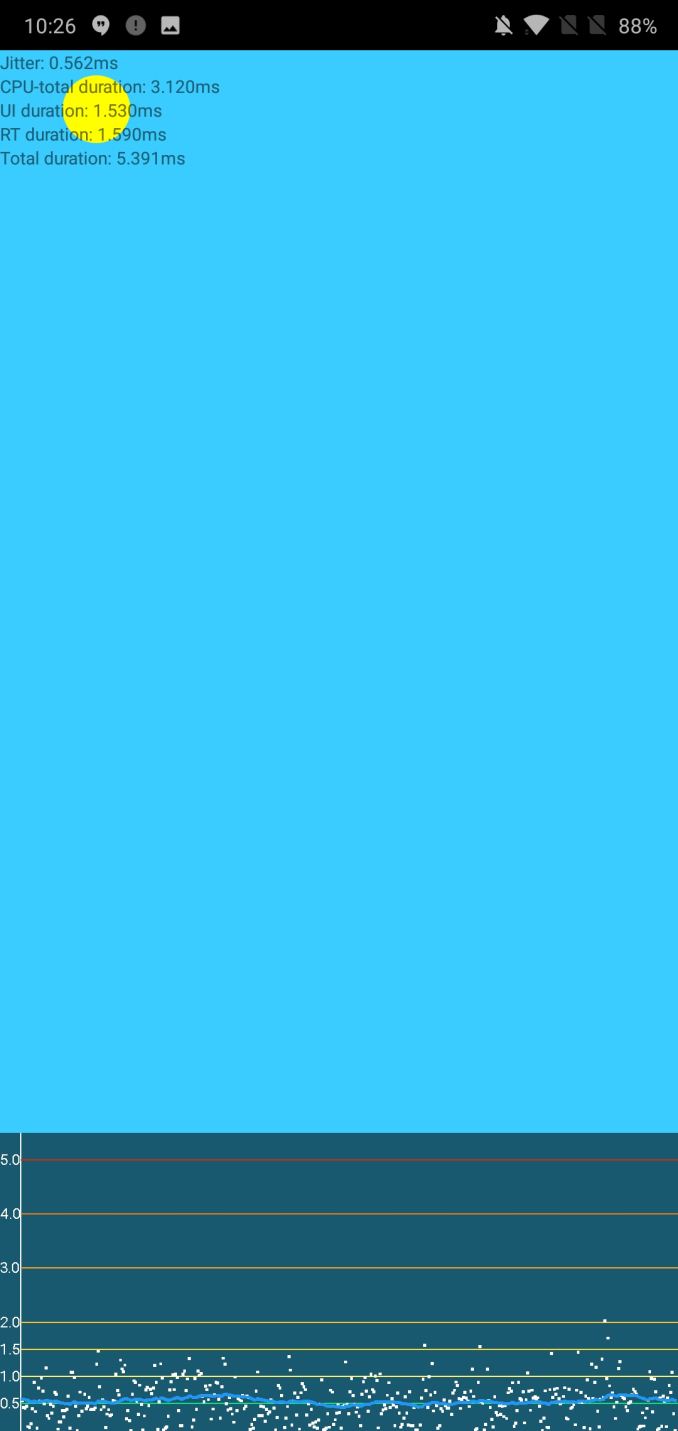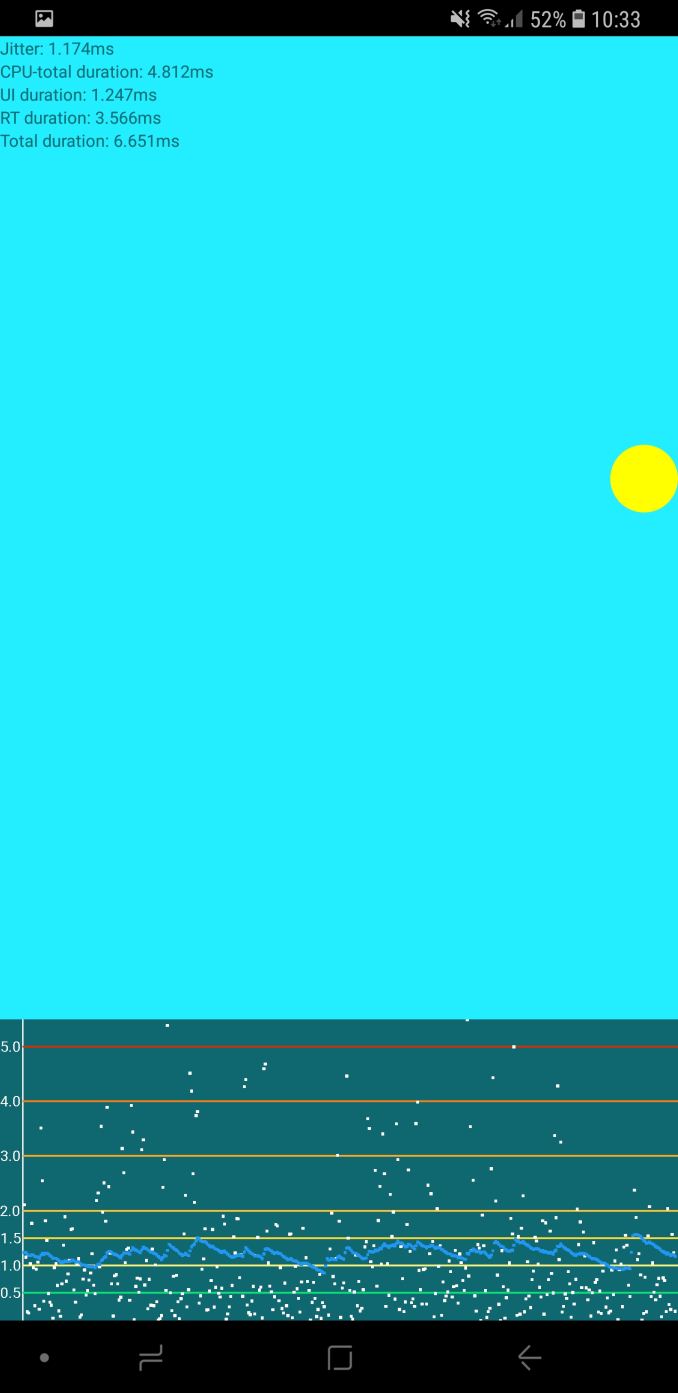The OnePlus 6 Review: Among The Best Of 2018
by Andrei Frumusanu on July 27, 2018 8:30 AM EST- Posted in
- Mobile
- Smartphones
- OnePlus
- OnePlus 6
System Performance
Another Snapdragon 845 device, another system performance section to dwell into. By now following the Galaxy S9 review and Mi MIX 2S review we should have some clear expectations of how the OnePlus 6 should perform. In my MIS 2S review in particular I was very vocal about how superbly the phone performed in terms of performance, and attributed this to a great software implementation on the side of SoC. The OnePlus 6 very much deserves the same praise as it not only has the same extraordinary snappiness, but actually ever so slightly manages to beat the MIX 2S in some cases.

Starting off with PCMark’s Web Browsing test, the OnePlus 6 is very much within the top scorers in terms of performance.

The video editing test again is mostly performing as expected.

In the Writing 2.0 test which uses Android APIs and does operations such as text editing and PDF rendering the OnePlus 6 actually manages to take the top spot in terms of performance. This test alone correlates extremely well with overall system performance of a phone and the OP6 taking first place is indeed very well representative of the phone’s feel.

Photo editing test, alongside the Mi MIX 2S also takes top spots among current devices.

The data manipulation score averages out among top Snapdragon 845 devices.

Finally the total score matches the Mi MIX 2S. There’s not much more to say here other than Qualcomm’s scheduler improvements in the S845 BSP have really paid off this generation and this directly results in excellent real-life performance.


The web tests showcase pretty much identical performance to the Mi MIX 2S which in turn both slightly outperform other S845 devices such as the Galaxy S9 and LG G7.
UI Fluidity
Over the past few months there’s been more outspoken discussions about Android speed tests versus actual device fluidity. In general the latter is extremely hard to quantize into a figure and there will always be corner cases or outliers that will probably perform better or worse when comparing between devices.
In the context of the OnePlus 6 as well as Snapdragon 845 devices I’ve looked more into what actually is different between them and what is seemingly causing the OP6 and MIX 2S to perform better than, say the Snapdragon Galaxy S9. Looking deeper into the kernel it looks like OnePlus and Xiaomi are both using a newer kernel build with more scheduler modifications than the kernels running on the S9 and G7. The details here go quite low level and is out of the scope of any public article, but the effects can be easily seen.


OnePlus 6 vs Galaxy S9+ (S845) Jitter Test
In the UIBench Jitter test we see the difference between the OnePlus 6 and the Galaxy S9 – the latter has a lore more inconsistent rendering frame-times. While in this test both have very clearly great frame-times well under 16.6ms – having more consistent frame times in turn can avoid random workload events that might push frame times over the deadline and result in dropped frames. The OnePlus 6 so far has been the best device in this particular test – only the Pixel phones come near to it but they don’t seem to have the same consistency over time.
Overall system performance of the OnePlus 6 deserves the same praise as the MIX 2S – both devices are currently the very best and fastest on the market and you will be absolutely not disappointed in their performances.










90 Comments
View All Comments
Total Meltdowner - Friday, July 27, 2018 - link
Art Photography? I'm not an unemployed liberal. I like phones to snap photos of family and friends doing things worth remembering.Cooe - Saturday, July 28, 2018 - link
Jesus Christ...Quantumz0d - Friday, July 27, 2018 - link
Starting with the wireless charging changing ergonomics and thickness, I refute. Look up at LG V30 - 7.3mm zero bump no notch. Has Qnovo on top of it, looks better made better with MIL spec. IP68 certified as well. OnePlus failed at Metal design with signal flaw with OP3/T and they cheaped out with glass just for marketing this time. About time when they ditch the jack. OPPO started that with their feeble built Find X.Too soft on Oneplus and other companies notch "there's really nothing controversial" its downright copied from Apple except that keeping the bottom bezel for no reason except to make it a marketing trash. Blacking it out for what ? Breaking the Android apps, but like all mainstream brainwashers Google also decided to add it with utter shameless act. Seems like even at AT no one cares about originality or engineering anymore. Shame
No mention of absence of Video out, Netflix certification. Same battery capacity since OP3T. And Axon 7 from 2016 is able to sell a 1440P AMOLED panel at same/less cost with more features like Stereo front facing. AKM DAC wgich works with Lineage. While OP cuts corners at all specs just increase the RAM and Memory that's it. Pixel 2XL shreds OP in speed with low RAM, not against it but this phone is hot garbage.
Oh this phone doesn't have USB3.0 either. CEO says no one uses when we have LTE pure BS. Why are they incl the high capacity UFS then ? Rubbish selfless corp. After being burned at the Op3 promised blobs and the worst part of this phone not mentioned, the T variant. Which makes the Op6 users look like fools, why don't this get mentioned anywhere ? Is OP paying that hefty ? Guess so since they skimp so much and price increase..its a disgrace.
Sultanxda left OP because they never bother to fix the camera or treat it as some high profile golden IP, or the 821 3T high clock crash. Dash charging, another proprietary technology, no way you can find replacement parts for this phone because 5-6Month EOL is extreme ripping.
dshess - Friday, July 27, 2018 - link
I wish one of the second-tier vendors would commit to long-term hardware support. At $600 (or $800), the story is when they manage to make a phone that sucks - but making an excellent phone for $250 is a great story, especially if you can still purchase the same device a few years later. It's like nobody is even trying to take on the iPhone.icalic - Friday, July 27, 2018 - link
Hi @Andrei Frumusanu,why no more gfxbench manhattan es 3.1 / metal test for battery life and final frame rate @ 200 nits?
i think that test is good for us to look GPU efficiency on every device.
for oneplus 6, i suspect high sustained gfxbench followed by higher power consumption than other snapdragon 845 devices.
Andrei Frumusanu - Friday, July 27, 2018 - link
Power consumption between devices doesn't really change. In this regard I'm keeping the power measurements to the initial SoC reviews of the first devices. The power I measured on the OP6 was not much different than on the S9+ which is covered here: https://www.anandtech.com/show/12520/the-galaxy-s9...The final frame rate benchmark has been superseded by the sustained performance measurements across all 3D workloads, so there's no need for a separate metric.
As for battery measurement in 3D workloads, I think the GFXBench test as an actual *battery* test didn't really convey a lot other than a maximum rundown test. I think having a phone loop in an actual commonly released game would be better representative. As a reminder, the SoC's power consumption will differ greatly at different frequencies and real games will be Vsync capped at 60fps, so in actual use-cases the MH3.1 battery test didn't really show a representation of such use-cases. Currently I'm still thinking about a way to do this better and hopefully the methodology will evolve, but for now it's as it is due to practical reasons.
arvindgr - Friday, July 27, 2018 - link
In OnePlus 3 review, AT included note on USB, that they're still using USBv2! But 4 generations later OP6 still packs that same USBv2 tech. Also with Oppo proprietary charging tech, they are least bothered about USB-PD standards which its SoC supports via QCv4. Why such tech implementations weren't discussed at all..?Andrei Frumusanu - Friday, July 27, 2018 - link
USB 3.0 has issue with creating radio frequency interference in the 2.4GHz band which requires vendors to do a lot more engineering in terms of shielding, that's why a *lot* of phones don't support it.In regards to fast charging techniques - first of all ever since I came back to AT I haven't had the opportunity to re-test all the devices over the last year that we were missing data on. Secondly I didn't prioritise this as much because I feel after 5V/2A/10W which essentially every device nowadays supports, faster charging rates become diminishingly relevant.
Batteries are supposed to be charged at a maximum of 1C, for the OP6 that's for example 3.3A since the capacity is 3.3Ah. A 10W charger is already 2.38A, going to 15W is getting near the limit. Devices nowadays also have like 10 different charging profiles depending on what power supply you connect to it, so while true we can resume testing the stock charger, but again in reality how representative is that really for most people, especially among AT readers?
Quantumz0d - Friday, July 27, 2018 - link
Appreciate the response for this. I always wonder what's the reason behind cutting costs for USB spec. And about the Dash charge, it's proprietary you are stuck with using the accessories from OP site only and usable with their HW only. Its not about speed its about adopting standards like USB PD or QC.Andrei Frumusanu - Friday, July 27, 2018 - link
> Its not about speed its about adopting standards like USB PD or QC.I think that's a weird attitude to take. QC or PD are just ways to achieve speed. A 10W 2A non-standard charger will charge the same as a 10W QC, PD, Dash or whatever charger. Electrons don't care about the standard.